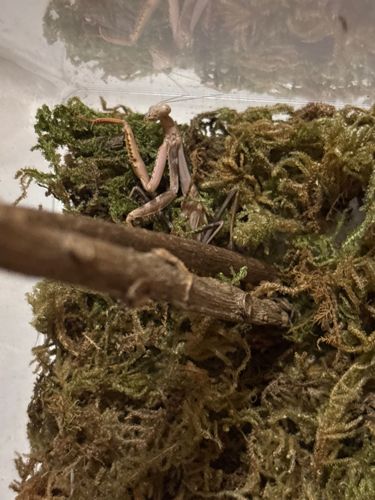Praying Mantis (likely European Mantis or a related species due to color and build)
Scientific Name: Mantodea (Order level, specific species cannot be determined definitively from the image, but could be Mantis religiosa if a European Mantis)
Order & Family: Order: Mantodea, Family: Mantidae (or various families within Mantodea depending on specific species)
Size: Varies significantly by species, but generally ranges from 1 to 6 inches (2.5 to 15 cm) in length. The specimen in the image appears to be in the average to larger size range for mantises, possibly 3-5 inches.

Natural Habitat
Found in various habitats, including gardens, grasslands, meadows, forests, and shrublands, particularly where there is ample vegetation for camouflage and prey. They often perch on plants, branches, or tall grasses.
Diet & Feeding
Strictly carnivorous, feeding on a wide variety of other insects such as flies, moths, crickets, butterflies, and even other smaller mantises. Larger species can occasionally catch small vertebrates like lizards, frogs, or hummingbirds.
Behavior Patterns
Mantises are predatory insects known for their distinctive "praying" posture. They are ambush predators, patiently waiting for prey to come within striking distance. Their cryptic coloration helps them blend into their environment. They have a slow, deliberate movement when hunting. Female mantises are known to sometimes consume the male during or after mating.
Risks & Benefits
Benefits: Praying mantises are highly beneficial to gardeners and agriculture as natural pest control, preying on many common garden pests. Risks: Generally pose no risk to humans; they are not venomous and do not bite unless handled roughly or feel threatened, and even then, their bite is not harmful.
Identified on: 8/17/2025